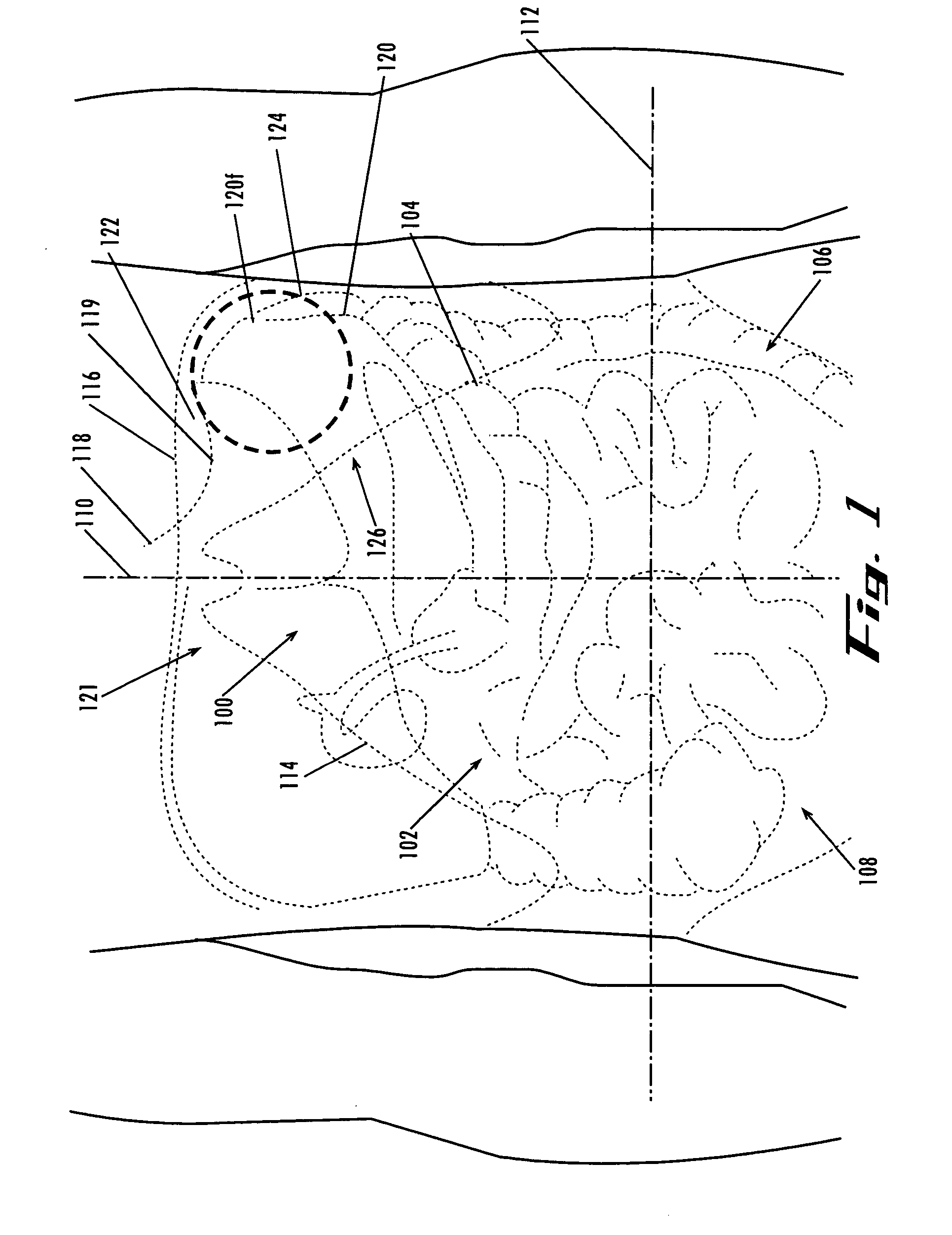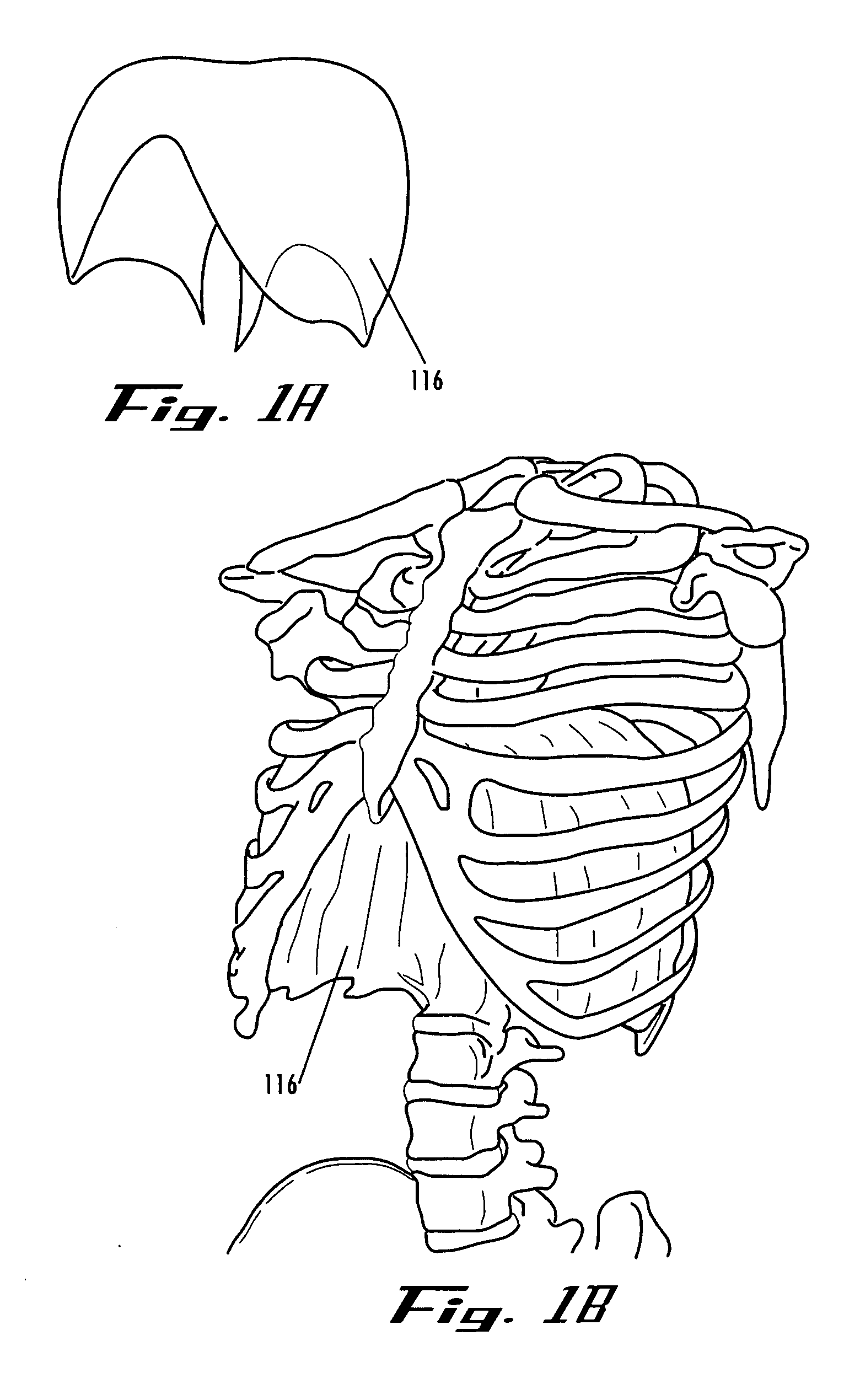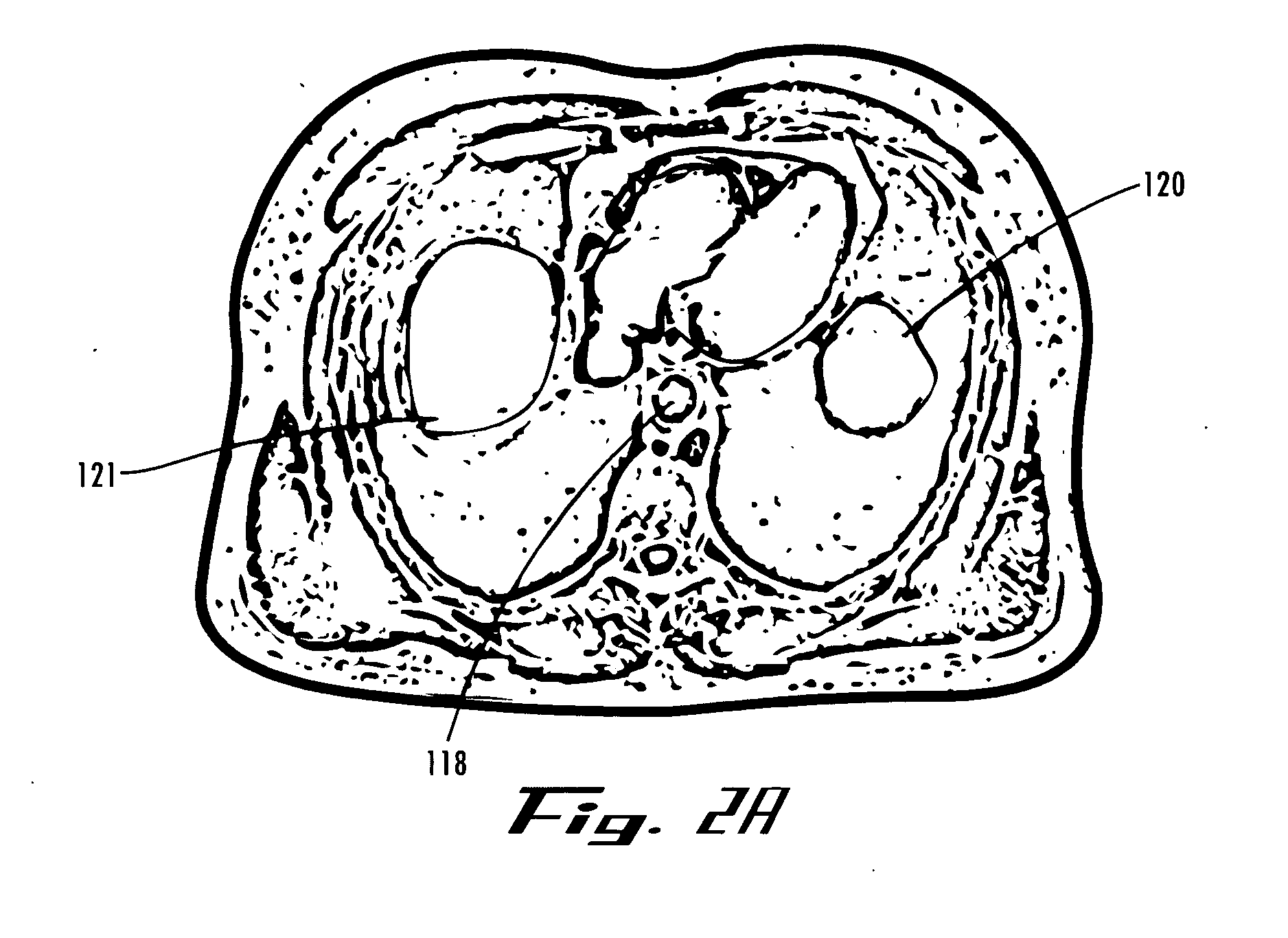Devices and methods for treatment of obesity
a technology for obesity and devices, applied in the field of obesity treatment, can solve the problems of obesity in the current limited treatment options, gastric bypass procedures incur a great deal of morbidity, and create a malabsorptive sta
- Summary
- Abstract
- Description
- Claims
- Application Information
AI Technical Summary
Benefits of technology
Problems solved by technology
Method used
Image
Examples
example
[0300] The following example is put forth so as to provide those of ordinary skill in the art with a complete disclosure and description of how to make and use the present invention, and are not intended to limit the scope of what the inventors regard as their invention nor are they intended to represent that the experiment below was the only experiment performed.
[0301]FIGS. 77A-77F are radiographs taken during the placement of an expandable device in a human cadaver in the location described above. Initially, a balloon catheter 130 was inserted trans-orally and advanced to place the distal tip at the gastro-esophageal junction, as shown in FIG. 77A. The abdominal cavity was next accessed using a veress needle and a guidewire (0.035″ Cordis guidewire, CORDIS®, http: / / www.cordis.com / ) 134 that were inserted through the abdomen in the location indicated by 126 in FIG. 1.
[0302] As the guidewire 502 was advanced, it was naturally guided along the curvature of the surface of the diaphr...
PUM
 Login to View More
Login to View More Abstract
Description
Claims
Application Information
 Login to View More
Login to View More - R&D
- Intellectual Property
- Life Sciences
- Materials
- Tech Scout
- Unparalleled Data Quality
- Higher Quality Content
- 60% Fewer Hallucinations
Browse by: Latest US Patents, China's latest patents, Technical Efficacy Thesaurus, Application Domain, Technology Topic, Popular Technical Reports.
© 2025 PatSnap. All rights reserved.Legal|Privacy policy|Modern Slavery Act Transparency Statement|Sitemap|About US| Contact US: help@patsnap.com



